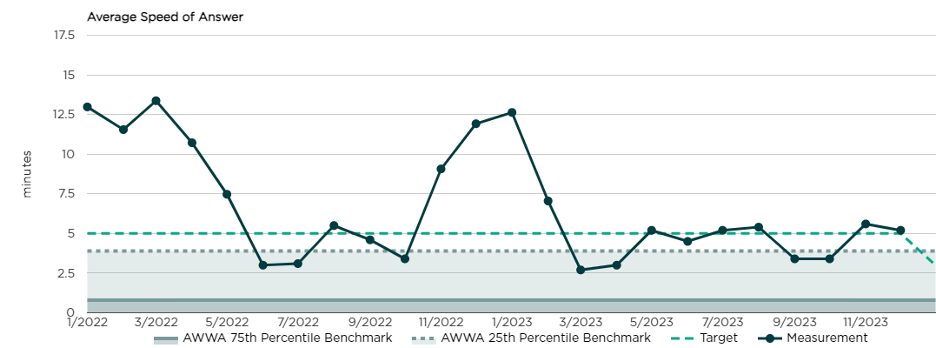The Sewerage and Water Board of New Orleans (SWBNO) is an organization employing more than 1,300 high-performing individuals who work together to produce drinking water, clean wastewater, and move stormwater for nearly 400,000 residents and millions of visitors each year. Raftelis worked with SWBNO to start a transformational journey just a few years ago by undertaking a comprehensive strategic planning effort where stakeholders met, discussed, and identified key focus areas, goals, and tactics to elevate their utility services.
However, wisely, SWBNO realized that identifying, defining, and creating a strategic roadmap was only the beginning. To affect change within their organization and community, SWBNO needed to be committed to the implementation and execution of the plan. They understood that the integration of the plan into the culture of the organization was the only way to show progress and, ultimately, success.
SWBNO, like many utilities, has long faced challenges: operational, financial, geographic, and workforce-based, to name a few. In 2021, the utility, with the assistance of Raftelis, initiated a strategic planning process to serve as a catalyst for organizational change and to guide the next phase of rebuilding the organization for the future. The plan directs the organizational goals, budget priorities, and progress monitoring in the organization’s long-term focus areas. While SWBNO did not have a formal strategic plan before this effort, considerable activities were underway across the organization to improve operations, resiliency, and customer satisfaction.
SWBNO’s planning process involved input from a broad group of internal and external stakeholders, including SWBNO’s Board of Directors and the Board’s strategy committee, the Executive Director and leadership team, employees (through focus groups and an employee survey), and other local community and business leaders. The goal of the strategic planning process was to build trust among internal and external stakeholders, develop actionable strategies and measurable objectives, and increase communication and collaboration across the organization.
After considering all feedback, Raftelis worked with SWBNO to develop and ultimately adopt the 2022-2027 Strategic Plan. The plan highlights six focus areas. Each focus area is further defined by a list of key issues, goals, and intended results.
After the plan was developed, implementation became the priority. SWBNO staff began the implementation effort by creating the first of what will be annual work plans against the five-year strategic plan’s six focus areas.
The focus areas contain a series of initiatives and projects that, when implemented, will move SWBNO toward the achievement of its desired outcomes. Elements of the implementation process for SWBNO include leveraging internal subject matter expertise and continuing to use key staff members and small teams that are knowledgeable, energized, and committed to the achievement of the strategic plan. These subject matter experts and teams developed detailed implementation plans that advance the organization toward goal achievement.
SWBNO is holistically evaluating performance by defining success for each focus area, tracking relevant metrics, identifying targets or goals for the desired outcomes, and measuring progress on a grading scale. The utility is currently using a cloud-based performance management software platform called Ellio to measure both the progress of tactical level implementation as well as their performance around several key performance indicators (KPIs) and inform executive staff and the Board on the overall effectiveness of implementing the plan. The example below shows two years of historical data for performance associated with the average speed of answering customer service calls and even layers in benchmarking data from the American Water Works Association’s Benchmarking Survey for comparison.

SWBNO is committed to the success of the strategic plan. Since the plan is relatively new, implementation efforts have been ongoing, including changes and enhancements to metrics identification, tracking, and reporting. Overall, with each passing month, quarter, and year, the commitment to performance tracking improves and momentum is building. SWBNO staff are empowered to make a change, and with interdepartmental coordination, process transparency, and accountability, the path forward is clear and bright.
The approach in 2024 will include work sessions with executive leadership and biannual meetings of the full strategic plan leadership. Clear and actionable tactics that directly relate back to the challenges identified in the initial plan are imperative this year, as focus area leads are given more autonomy in reporting and reviewing metrics. SWBNO is looking forward to the new and exciting ways the ongoing implementation of the strategic plan impacts the utility and ultimately elevates SWBNO’s service to its customers.